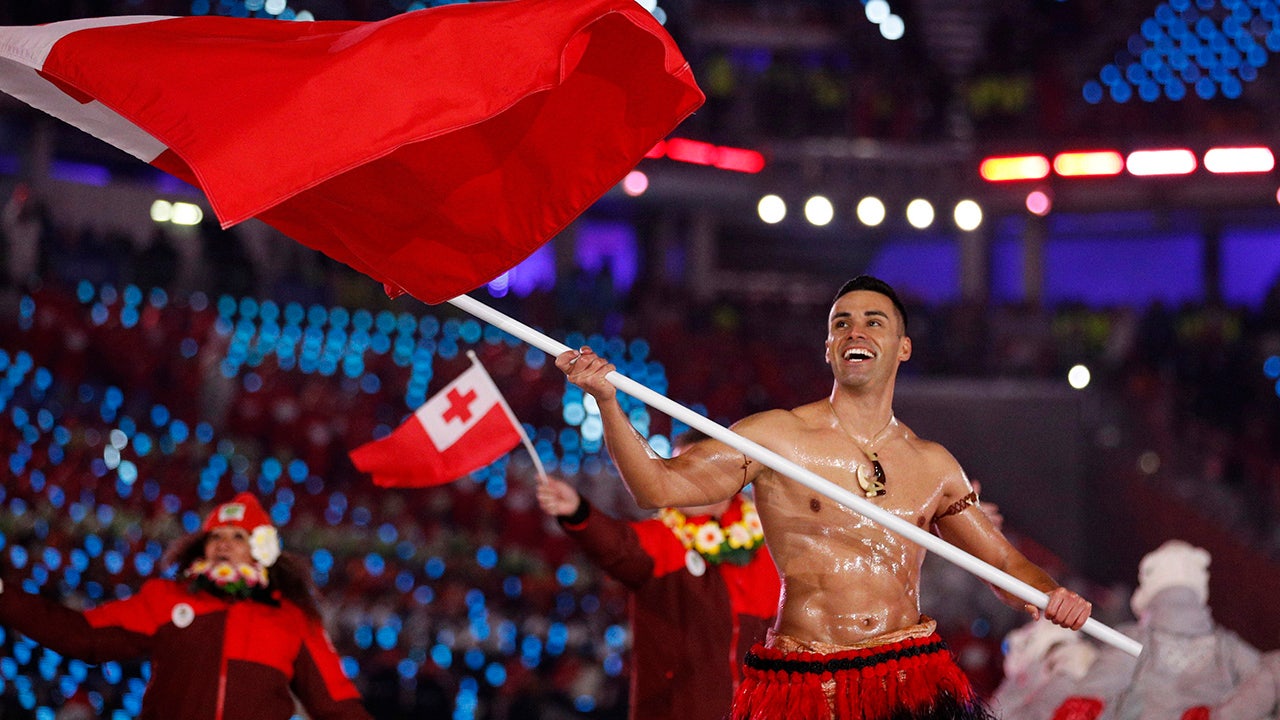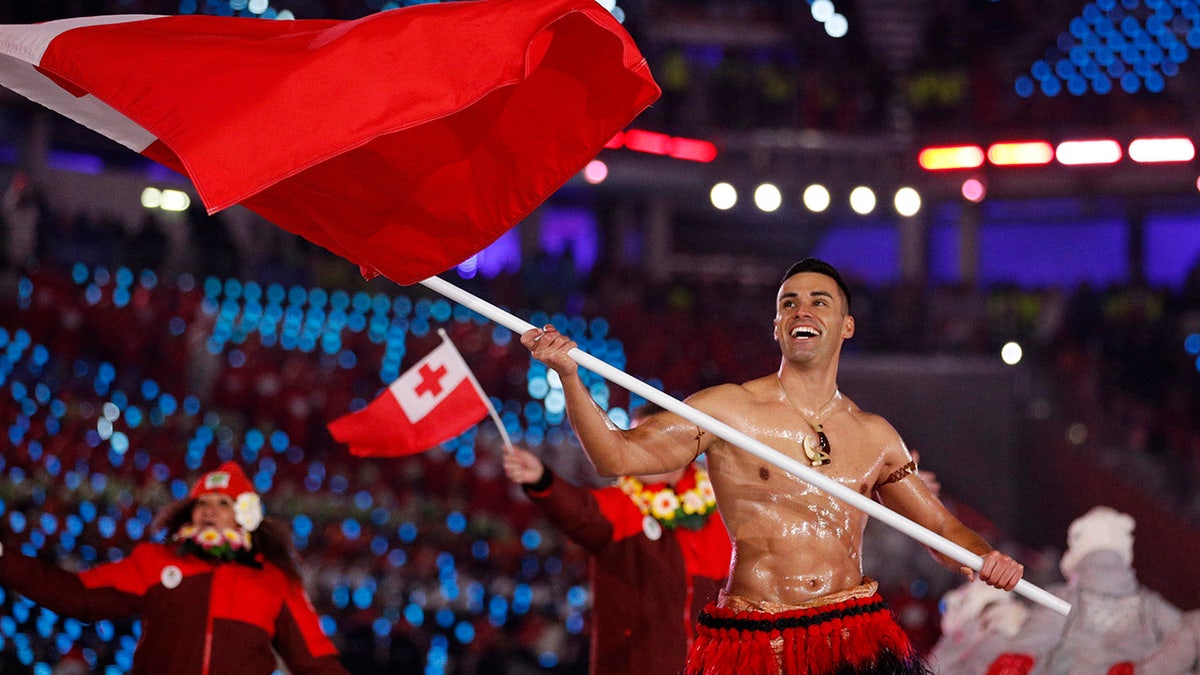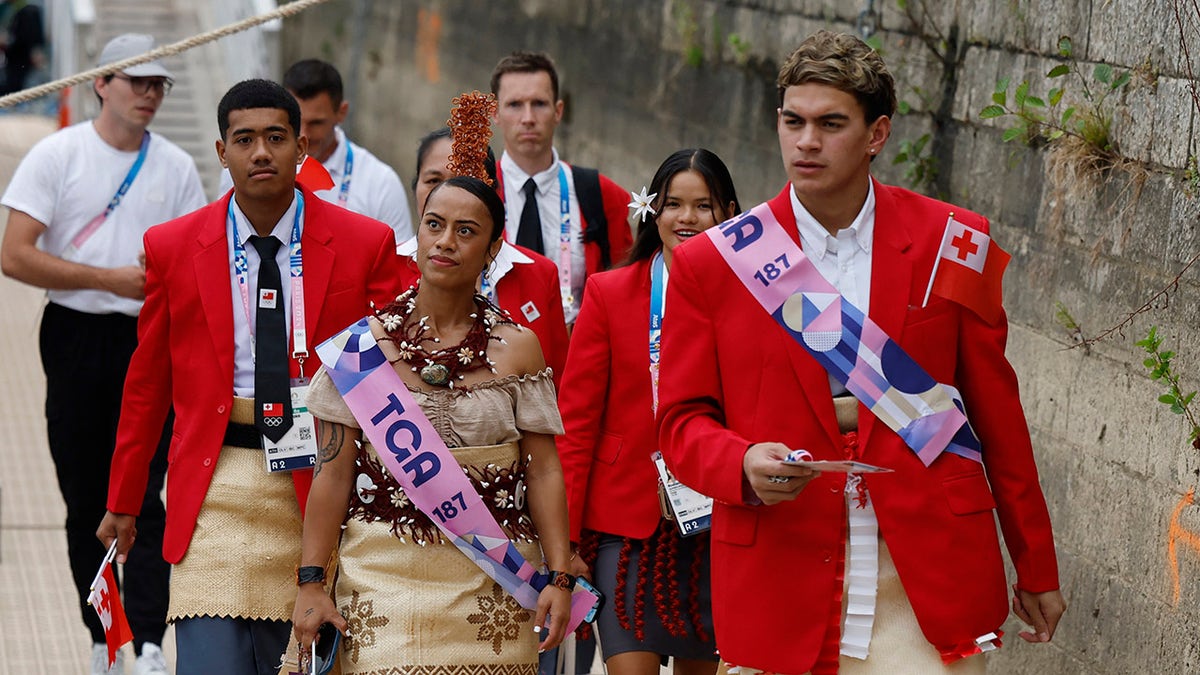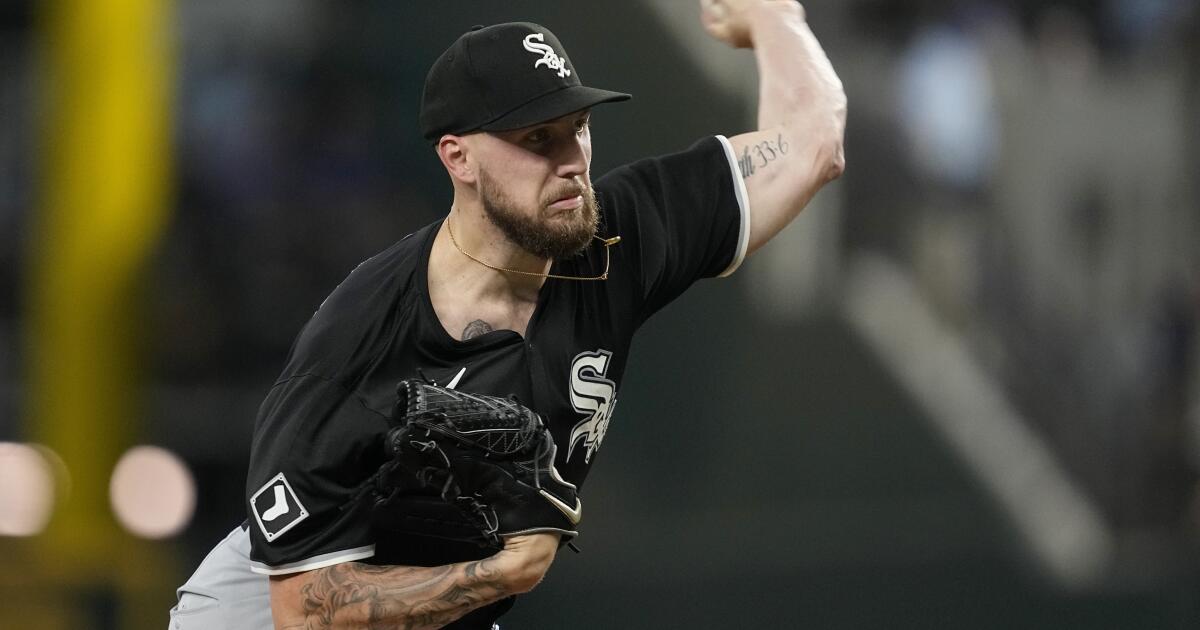Sports
PGA Tour and LIV Golf Agree to Alliance, Ending Golf’s Bitter Fight

The PGA Tour, the dominant force in men’s professional golf for generations, and LIV Golf, which made its debut just last year and is backed by hundreds of millions of dollars in Saudi money, will together form an industry powerhouse that is expected to transform the sport, executives announced Tuesday.
The rival circuits had spent the last year clashing in public, and the tentative agreement that emerged from secret negotiations blindsided virtually all of the world’s top players, agents and broadcasters. The deal would create a new company that would consolidate the PGA Tour’s prestige, television contracts and marketing muscle with Saudi money.
The new company came together so quickly that it does not yet even have a name and is referred to in the agreement documents simply as “NewCo.” It would be controlled by the PGA Tour but significantly financed by the Saudi government’s Public Investment Fund. The fund’s governor, Yasir al-Rumayyan, will be the new company’s chairman.
The deal, coming when Saudi Arabia is increasingly looking to assert itself on the world stage as something besides one of the world’s largest oil producers, has implications beyond sports. The Saudi money will give the new organization greater clout, but it comes with the troubling association of the kingdom’s human rights record, its treatment of women and accusations that it was responsible for the 2018 murder of Jamal Khashoggi, a leading critic.
The agreement does not immediately amount to a Saudi takeover of professional golf, but it positions the nation’s top officials to have enormous sway over the game. It also represents an escalation in Saudi ambitions in sports, moving beyond its corporate sponsorship of Formula 1 racing and ownership of an English soccer team into a place where it can exert influence over the highest reaches of a global game.
“Everybody is in shock,” said Paul Azinger, the winner of the 1993 P.G.A. Championship and the lead golf analyst for NBC Sports. “The future of golf is forever different.”
Since LIV began play last year, it has used some of the richest contracts and prize money in the sport’s history to entice players away from the PGA Tour. Until Tuesday morning, the PGA Tour had been publicly uncompromising: LIV was a threat to the game and a glamorous way for Saudi Arabia to rehabilitate its reputation. The PGA Tour’s commissioner, Jay Monahan, had even avoided uttering LIV’s name in public.
But a series of springtime meetings in London, Venice and San Francisco led to a framework agreement that stunned the golf industry for its timing and scope. Monahan, who defended the decision as a sound business choice and said he had accepted that he would be accused of hypocrisy, met with PGA Tour players in Toronto on Tuesday in what he called an “intense” and “certainly heated” exchange.
The deal, though, proved right the predictions that there could eventually be an uneasy patching-up of the sport’s fractures. The PGA Tour’s board, which includes a handful of players like Patrick Cantlay and Rory McIlroy, must still approve the agreement, a process that could be tumultuous.
It was only a year ago this week that LIV Golf held its inaugural tournament, prompting the PGA Tour to suspend players who competed in it. But by the end of the year, even though the circuit was locked in an antitrust battle with the PGA Tour and its stars were confronting uncertain futures at the sport’s marquee competitions, LIV had some of the biggest names in golf on its payroll. Its players have included the major tournament champions Brooks Koepka, Phil Mickelson and Cameron Smith.
The players were familiar, but LIV’s 54-hole events were jarring, with blaring music and golfers in shorts not facing the specter of being unceremoniously cut midway through. The PGA Tour, meanwhile, defended its 72-hole events, where low performers do not compete into the weekend, as rigorous athletic tests that adhered to the traditions of an ancient game.
The less-starchy LIV concept drew plenty of headlines, and the league won even greater attention because of its links to former President Donald J. Trump, who hosted LIV tournaments and emerged as one of its most enthusiastic boosters. The league, however, was still largely dependent on the largess of a wealth fund that had been warned that a rebel golf circuit was no certain financial bonanza. It stumbled to a television deal with the CW Network, and big corporate sponsorships were scarce.
The league accrued some athletic successes, even as its players faced the risk of eventual exclusion from golf’s major tournaments, which are run by organizations that are close to, but distinct from, the PGA Tour.
Last month, Koepka won the P.G.A. Championship, which was organized by the P.G.A. of America. Koepka, Mickelson and Patrick Reed were among the LIV players who fared especially well at the Masters Tournament, administered by Augusta National Golf Club, in early April.
Within weeks of the Masters, though, after a run of mutual overtures and months of bravado, PGA Tour and Saudi executives were convening in secret to see if there was a way toward some kind of coexistence, in part, Monahan suggested, because he did not think it was “right or sustainable to have this tension in our sport.” The result was an agreement that gives the tour the upper hand but is poised to make permanent Saudi Arabia’s influence over golf’s starry ranks.
Monahan, the tour’s commissioner, is in line to be the chief executive of the new company, which will include an executive committee stocked with tour loyalists. But al-Rumayyan’s presence, as well as the promise that the wealth fund can play a pivotal role in how the company is ultimately funded, means that Saudi Arabia could do much to shape the sport’s future.
In a memorandum to players on Tuesday, Monahan insisted that his tour’s “history, legacy and pro-competitive model not only remains intact, but is supercharged for the future.”
That was hardly a consensus view. Mackenzie Hughes, a PGA Tour player, acidly noted on Twitter that there was “nothing like finding out through Twitter that we’re merging with a tour that we said we’d never do that with.” And Terry Strada, the chairwoman of 9/11 Families United, who had assailed the Saudi foray into golf because of misgivings about the kingdom after the 2001 terrorist attacks, said Monahan and the tour had “become just more paid Saudi shills, taking billions of dollars to cleanse the Saudi reputation.”
The tour and the wealth fund both had incentives to forge an agreement, besides the prospect of concluding a chaotic chapter marked by allegations of betrayal and greed.
LIV had faced setbacks in civil litigation against the PGA Tour that threatened to drag al-Rumayyan into sworn testimony and force the wealth fund to turn over documents that could have become public. The tour has been under scrutiny from Justice Department antitrust investigators, who had examined in recent months whether the tour’s tactics to counter LIV had undermined golf’s labor market.
The litigation between the tour and LIV will end under the terms of the agreement announced Tuesday. The fate of the antitrust inquiry was less clear — experts said the new arrangement would not automatically immunize the tour from potential legal trouble — but LIV’s standing as its leading cheerleader evaporated.
For this year, the world’s professional golfers are unlikely to see seismic changes in their schedules or playing formats, with LIV and the PGA Tour expected to hold competitions as planned. There may be far more consequential changes later, though, chiefly because the new PGA Tour-controlled company will determine whether and how LIV’s team-oriented format might be blended with the tour’s more familiar offerings.
LIV players are expected to have pathways to apply for reinstatement to the PGA Tour or the DP World Tour, circuits from which some had resigned when faced with fines and suspensions, but they could face residual penalties for leaving in the first place. Through a spokeswoman, Greg Norman, the two-time major tournament champion who has been LIV’s commissioner, declined to be interviewed on Tuesday.
No matter what comes of the LIV brand or style, Tuesday’s announcement is a singular milestone in the Saudi quest to become a titan in global sports. With the deal, the kingdom can move, at least in golf, from a well-heeled disrupter to a seat of power at the establishment’s table.
Saudi officials have repeatedly denied that political or public relations motives undergird their eager pursuit of sports investments. Instead, they have framed the investments as necessary for shoring up the resource-rich kingdom’s finances and to enhance its standing on the world stage.
Beyond its imprint on golf, the wealth fund previously purchased Newcastle United, a potent English soccer team, and a company with close ties to the fund has eyed investments in cricket, tennis and e-sports. And Saudi Arabia has tried to become a host of major sporting events, from boxing matches to its pending bid to host the World Cup in 2030.
But when Saudi Arabia barged into golf last year, it was nearly unthinkable that al-Rumayyan would so swiftly become a formal ally of Monahan and the sport’s other power brokers.
“Anybody who thought about it logically would see that something was going to have to happen,” Adam Hadwin, a PGA Tour player, said on Tuesday. It was inconceivable, he suggested, that the world’s best players would only compete against each other at the four major tournaments, but an armistice “happening this quick and in this way is surprising.”
For much of the last year, LIV players have deflected questions about Saudi Arabia’s history on human rights and other matters that helped make the kingdom’s surge into golf an international flashpoint. They were, they often said, merely golfers and entertainers.
Until Tuesday, Monahan had tried to use the stain of Saudi Arabia to undercut the new league and its golfers.
“I would ask any player that has left, or any player that would ever consider leaving: Have you ever had to apologize for being a member of the PGA Tour?” he said last year.
On Tuesday, when Monahan declared that the leaders of golf’s factions had “realized that we were better off together than we were fighting or apart,” it was his tour’s players facing questions about lucrative connections to Riyadh.
“I’ve dedicated my entire life to being at golf’s highest level,” Hadwin, the tour player, said. “I’m not about to stop playing golf because the entity that I play for has joined forces with the Saudi government.”
Reporting was contributed by Andrew Das, Kevin Draper, Lauren Hirsch, Eric Lipton, Victor Mather, Ahmed Al Omran and Bill Pennington.

Sports
Can Paris as Olympic host renew enthusiasm for the Games?

Follow our Olympics coverage from the Paris Games.
The Olympic Games have had a rough decade.
For so many people over the past 10 years, those five multicolored rings that were long synonymous with the pinnacle of sport came to symbolize billions in wasteful spending, similar excesses of political and moral dissonance and a dismantling of the idea of the Games as pure competitions played for spirit and country.
Every cycle, the Games stumbled through another series of problems: Russia’s annexing of Crimea and its use of a systemic doping program during the Sochi Games in 2014; the threat of the Zika virus and unparalleled disorganization in Rio de Janeiro in 2016; the threat of nuclear war in South Korea in 2018; the depressing images of empty stadiums because of the coronavirus pandemic in Tokyo in 2021 and Beijing in 2022.
Empty stands due to the COVID-19 pandemic took the shine off the Tokyo Games, which were also delayed one year. (Tim Clayton / Corbis via Getty Images)
At those same Beijing Games, organizers and the International Olympic Committee were frequently asked about free speech and the treatment of ethnic minority groups like the Uyghurs, a situation the United Nations later described as crimes against humanity, easily flying in the face of the stated values of the Olympics.
With each dent, television audiences in the United States have turned away in significant numbers, threatening one of the largest single sources of Olympic revenue.
Now comes Paris. One of the world’s leading tourist destinations, a city that conjures levels of fascination and romanticism that few if any can top, will take on the task of restoring to the Olympic Games that mythical quality that for so long allowed it to exist as something so much more than sport.
That quality might have always been more myth than truth. Crass commercialism helped transform the Olympics into a multibillion-dollar behemoth from the quaint sports festival seen when Paris last hosted 100 years ago. Still, Paris has promised to bring back the luster.
“I have been an athlete, and I love the pressure,” Tony Estanguet, a three-time gold medalist in canoe and the president of the Paris 2024 Organizing Committee, said during a visit to New York last fall. “How can we move the line and be more creative and more innovative? The success of the Games relies on this ability to evolve and to make the brand, this event, more attractive. It’s a permanent fight.”
The IOC, the roughly 100-member organization based in Switzerland that owns the trademark to the famous rings and awards the Games to cities that compete to hoist them, has been losing that fight lately for several reasons. One has been a lack of geographic diversity, with the previous three Olympics in East Asia.

GO DEEPER
How NBC is broadcasting the most unique opening ceremony in Olympic history
To change that, the IOC in recent years altered its bidding rules to take a more active role in targeting cities rather than simply selecting from whichever candidates offer themselves up. After Paris, the Olympics will head to northern Italy; Los Angeles; the French Alps; Brisbane, Australia; and Salt Lake City. Organizers hope that will help revive lagging interest in Western Europe and the Americas.
“No question in my mind, moving the Games to such an iconic European city like Paris, plus having fans and partners back in person, will be such a needed and welcomed lift,” said Michael Lynch, a leading international sports consultant and the former director of sports marketing for Visa, one of the main sponsors of the Olympics.
For their part, the French have taken up the fight in the most French way: by showing off their beautiful capital. Estanguet and his team decided years ago when they first bid for these Games to marry sports and culture as never before by placing the Games at some of the most famous and recognizable locations in and around the French capital.
The move is a stark turn away from the plan most cities have followed when they have hosted recent Olympics. That playbook generally involved finding a massive, undeveloped or long-since abandoned tract and building a huge park filled with sports facilities, usually somewhere outside the center of the city, and putting a big fence around it.
Paris did a bit of that with its Olympic Village, where athletes will live, in St. Denis, north of the city center and not far from the Stade de France, where track and field will take place. The aquatics center — host to diving, water polo and artistic swimming — is near there, too.
Just about everything else is stuffed into or just beyond the peripheral road that encircles the main area of Paris, which can be traversed on foot with a comfortable pair of shoes in an afternoon.
As the sun sets beyond the city Friday evening, the opening ceremony will unfold along the Seine, with some 10,000 athletes floating down the river on boats rather than marching into an enclosed, remote stadium. Beach volleyball will take place at the Eiffel Tower. Fencing will take place at the Grand Palais. Breaking, skateboarding and 3×3 basketball will happen near Place de la Concorde. The equestrian competition will happen at Versailles.

Beach volleyball in the shadow of the Eiffel Tower figures to be one of the visual spectacles of the Paris Olympics. (Tim Clayton / Corbis via Getty Images)
In addition to creating a two-week commercial for Paris, organizers want to reimagine what the Olympics can be by bringing them closer to population centers rather than siphoning them away in a remote area. It’s especially poignant after Tokyo and Beijing, two consecutive versions of the Olympics that were siloed as never before, with COVID-19 prompting organizers to prohibit paid spectators.
The fallout was ugly, especially in the United States, where the size of the television audience dwindled for NBC, whose media rights fee accounts for about 50 percent of Olympic television revenue. Coverage from Beijing in 2022 dropped 40 percent from South Korea in 2018, which was down from Sochi in 2014. Coverage from Tokyo in 2021 was down 42 percent from Rio in 2016.
Michael Payne, the former director of marketing for the IOC, said audiences have grown elsewhere, especially for the host countries in Asia, but after a few “challenging Games,” in his words, Paris brings the chance for a “reboot.”
“Would be good to get back to normal,” Payne said with Olympian understatement.
There is no guarantee for that. However wondrous and new Friday’s opening ceremony might appear, clouds are hanging over the Games, as there always are in this era.
Russia, long one of the most important countries in the Olympic movement, remains a pariah nation because of its history of state-sponsored doping and its invasion of Ukraine. Athletes from Russia and Belarus will compete as part of a neutral group of athletes with no national affiliation.
Israel’s war in Gaza, a significant response to deadly attacks by Hamas last October, has sparked calls for athletes from Israel to be banned and generated demonstrations at Israel’s first men’s soccer game Wednesday.
The threat of a terrorist attack looms, especially when so many events will take place in the center of Paris.
The worldwide anti-doping system, which relies on independent national organizations to test their athletes, has broken down. COVID-19 rates are rising. With people from all over the world converging on Paris, the city might become the ultimate petri dish, especially the Olympic Village, where the athletes will live and eat and socialize for the next 17 days.
David Wallechinsky, a leading Olympic historian, said he walked 10 miles through Paris this week searching for a pre-Games buzz. He couldn’t find it. Still, he knows everything changes once the competitions begin, the stadiums fill and the host country wins its first gold medal.
Wallechinsky also knows one thing for certain.
“It’ll look good,” he said of the Paris Games.
Estanguet wants more than that. He knows the world will be watching.
“The pressure is positive to me,” he said. “We have to succeed.”

Equestrian events will take place in front of the Palace of Versailles, one of the many marriages of sport and iconic venue at the Games. (Pierre-Philippe Marcou / AFP via Getty Images)
(Illustration: Dan Goldfarb / The Athletic; photo of the Eiffel Tower: Maja Hitij / Getty Images)
Sports
Tonga Olympic flag bearer Pita Taufatofua abandons shirtless look for Paris opening ceremony

Olympics fans hoping to see Tonga national heartthrob Pita Taufatofua in his signature opening ceremony uniform – or lack thereof – were disappointed on Friday when the country’s viral flag bearer was sporting a more dressed up look.
Taufatofua, who has competed in both the Summer and Winter Olympics, became a fan favorite for his shirtless, oiled-up look in past Games.
Malia Paseka and Pita Taufatofua, of Tonga, carry their country’s flag during the opening ceremony in the Olympic Stadium at the 2020 Summer Olympics, Friday, July 23, 2021, in Tokyo, Japan. (Hannah McKay/Pool Photo via AP)
But rainy weather seemed to cause Taufatofua to button up for this Olympics’ opening ceremony.
“I didn’t recognize him, he had his shirt on,” Hall of Fame quarterback Peyton Manning joked during NBC’s broadcast of the Parade of Nations. “Paris baby oil was stocked full this week.”
Taufatofua competed in Taekwondo in the 2020 Tokyo Olympics and the 2016 Rio Games. He also competed in cross country skiing in the 2018 Olympics in PyeongChang.
Despite qualifying for three Games, Taufatofua announced in April that he had failed to do so for Paris.

Peta Taufatofua carries a flag of Tonga during the opening ceremony of the 2018 Winter Olympics in Pyeongchang, South Korea, Friday, February 9, 2018. (AP Photo/Jae C. Hong, File)
OPENING CEREMONY NODS TO HEADLESS MARIE ANTOINETTE, MÉNAGE À TROIS RECEIVE MIXED REACTIONS
“This time my team and I fell short of competing at the Paris Olympics. I gave my absolute everything in both the Kayak and Taekwondo qualifiers but missed out on a qualification,” he said in a post on Instagram.
“I’m not kneeling in disappointment. In fact I couldn’t be happier. I’m kneeling to give thanks to God for delivering our team safely through another competition. Its easy to ask for things when you need something, but much harder to give thanks for things when they don’t go your way.
But earlier this week, Taufatofua announced that he would be headed to Paris after all as a flag bearer.

The delegation of Tonga arrives ahead of the floating parade at the start of the Opening Ceremony of the Olympic Games Paris 2024 on July 26, 2024, in Paris, France. (Clodagh Kilcoyne – Pool/Getty Images)
“Life is interesting. After missing out on the Olympic qualifiers, my goal was to focus on other areas of life. I had been defeated in battle with more scars added to the trophy cabinet, but I couldn’t have been happier.
“While not competing, the spirit of the Games called me, opportunities arose and I couldn’t say no. This time the medal I fight for is to be of service, to be there for my fellow athletes, an ear of support or a voice of encouragement. To share what I have learnt and, more importantly, to hear the stories of the other Olympians, these amazing human beings getting ready to represent their nations.”
Follow Fox News Digital’s sports coverage on X, and subscribe to the Fox News Sports Huddle newsletter.
Sports
How trade deadline dynamics have complicated the Dodgers' pursuit of Garrett Crochet

Garrett Crochet believes he can pitch through October.
“With the way my body’s been feeling and responding to the five-day routine,” the Chicago White Sox ace, and top trade deadline target, said at this month’s All-Star Game. “I think that anything’s possible.”
But whether he gets the chance, with the Dodgers or any other contending club, seemingly grows less likely by the day.
In theory, someone like Crochet should fit what is perhaps the Dodgers’ biggest deadline need.
The club wants an “impact” pitcher, as general manager Brandon Gomes described it this week. Crochet will probably be the best option available, a hard-throwing left-hander with a 3.07 ERA in 21 starts this year, more strikeouts (157) than any other pitcher in the American League and two seasons of team control left after this year.
Crochet does, however, have a looming workload problem; one that could diminish — if not eliminate — his chances of being dealt to a contender before Tuesday’s deadline.
In his first full season back from 2022 Tommy John surgery, Crochet has already doubled his career-high for innings, logging 111 this year after never previously surpassing 54. Because of that, Crochet’s workload might need to be limited the rest of the year, with the 25-year-old perhaps requiring a break before the playoffs or a late-season shift into the bullpen.
On Thursday, Crochet then threw a wrench into the process.
According to multiple reports, the left-hander would not only like to remain on a normal starter’s schedule for the rest of the year, but would also want a contract extension from any club that acquires him — reportedly a requirement before he agrees to pitch in October, or even considers some sort of late-season relief role.
The news added another complicated layer to what was already the Dodgers’ biggest trade deadline conundrum.
Even under the simplest of circumstances, lining up on a trade package for the pitcher was proving to be a challenge in itself.
And now, less than a week away from the deadline, the situation is underscoring the Dodgers’ difficulties in this year’s market — where there are no easy deals to address their biggest needs.
Even before Crochet’s desire for a contract extension, several factors were working against the Dodgers in their negotiations with the White Sox.
From Chicago’s point of view, Crochet is as valuable as any commodity on this year’s trade market — barring the Detroit Tigers making the surprise decision to deal Cy Young front-runner Tarik Skubal.
When the White Sox dealt another controllable ace, Dylan Cease, to the San Diego Padres earlier this year, they got four players back, including three of the Padres’ top 10 prospects, according to MLB Pipeline rankings, and one top-100 prospect in the sport overall.
Acquiring Crochet, who has an extra year of team control compared to Cease, figures to cost at least that much.
Crochet’s workload concerns, however, changed the calculation for a team like the Dodgers. If he were unable to serve as a postseason ace this year, it would diminish his short-term value to any contending club. But if he keeps pitching regularly and increases his workload too much, it could create concerns about long-term impacts in the future.
It’s why, while the White Sox would likely target the top of the Dodgers’ farm system — catcher Dalton Rushing and outfielder Josue De Paula would be the biggest potential prizes — the Dodgers would almost certainly be reluctant to part with so much.
De Paula is a 19-year-old high-A slugger ranked as one of MLB Pipeline’s top 100 overall prospects. With a 6-foot-3 frame and powerful left-handed swing, he has received comparisons to Houston Astros star Yordan Alvarez. And as one scout recently described it, his young age and sky-high potential make him, at this juncture, a virtually “untouchable” prospect.
Rushing, the team’s 2022 first-round pick, is a fellow top-100 prospect who is even closer to reaching the majors, as a 23-year-old slugger currently at the double-A level.
Some industry evaluators have wondered whether this deadline could be an optimal time for the Dodgers to move Rushing. After all, his pathway to the majors is blocked, with Will Smith signed to a 10-year extension behind the plate (and Shohei Ohtani locked in for the foreseeable future at DH). Rushing’s value around the sport is at a high point as well, thanks in part to his 25 home runs since the start of last year.
“Obviously, if he gets to the big leagues and crushes it, his stock will go up,” one rival scout said. “But he’s been so good with the bat as a pro that it’s hard to imagine it gets better.”
That means, for the Dodgers, this deadline has really become a question of “opportunity cost” — forcing them to weigh if there are any potential deals even worth considering for such highly touted prospects.
And while, on paper, Crochet might have been a fit, the realities of this year’s market have made most blockbuster moves appear like a long shot.
That’s not to say the Dodgers couldn’t look elsewhere for an impactful deadline splash.
The team has interest in another White Sox star, outfielder Luis Robert Jr. The best rental starter on the market, Jack Flaherty of the Detroit Tigers, is a pitcher they have pursued in the past.
There will be plenty of other names that could fit the Dodgers roster, too, from rental outfielders like Jesse Winker and Tommy Pham (who has expressed interest in joining the Dodgers before), to high-leverage relievers like Tanner Scott and Carlos Estévez (who could shore up the bullpen in lieu of starting pitching reinforcements), and even utility infielders with multiple years of control like Luis Rengifo and Nico Hoerner (who were linked to the team by AM 570 this week).
But, in all likelihood, the Dodgers will struggle to address their biggest need on the mound, with the difficulties surrounding their pursuit of Crochet underscoring the imperfect nature of this year’s deadline market.
-

 World1 week ago
World1 week agoOne dead after car crashes into restaurant in Paris
-

 Midwest1 week ago
Midwest1 week agoMichigan rep posts video response to Stephen Colbert's joke about his RNC speech: 'Touché'
-

 News1 week ago
News1 week agoVideo: Young Republicans on Why Their Party Isn’t Reaching Gen Z (And What They Can Do About It)
-

 News1 week ago
News1 week agoIn Milwaukee, Black Voters Struggle to Find a Home With Either Party
-

 Politics1 week ago
Politics1 week agoFox News Politics: The Call is Coming from Inside the House
-

 News1 week ago
News1 week agoVideo: J.D. Vance Accepts Vice-Presidential Nomination
-

 Movie Reviews1 week ago
Movie Reviews1 week agoMovie Review: A new generation drives into the storm in rousing ‘Twisters’
-

 World1 week ago
World1 week agoTrump to take RNC stage for first speech since assassination attempt



/cdn.vox-cdn.com/uploads/chorus_asset/file/25547838/YAKZA_3840_2160_A_Elogo.jpg)










